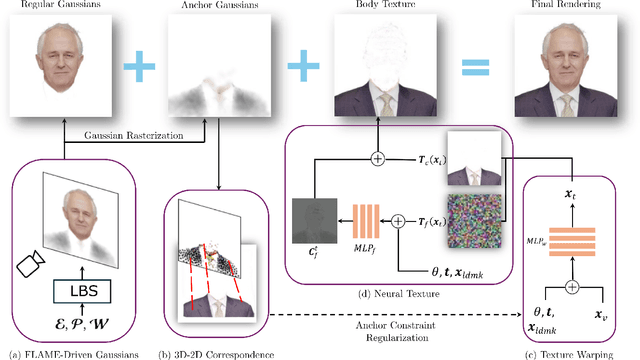Zhilin Guo
OpenGU: A Comprehensive Benchmark for Graph Unlearning
Jan 06, 2025



Abstract:Graph Machine Learning is essential for understanding and analyzing relational data. However, privacy-sensitive applications demand the ability to efficiently remove sensitive information from trained graph neural networks (GNNs), avoiding the unnecessary time and space overhead caused by retraining models from scratch. To address this issue, Graph Unlearning (GU) has emerged as a critical solution, with the potential to support dynamic graph updates in data management systems and enable scalable unlearning in distributed data systems while ensuring privacy compliance. Unlike machine unlearning in computer vision or other fields, GU faces unique difficulties due to the non-Euclidean nature of graph data and the recursive message-passing mechanism of GNNs. Additionally, the diversity of downstream tasks and the complexity of unlearning requests further amplify these challenges. Despite the proliferation of diverse GU strategies, the absence of a benchmark providing fair comparisons for GU, and the limited flexibility in combining downstream tasks and unlearning requests, have yielded inconsistencies in evaluations, hindering the development of this domain. To fill this gap, we present OpenGU, the first GU benchmark, where 16 SOTA GU algorithms and 37 multi-domain datasets are integrated, enabling various downstream tasks with 13 GNN backbones when responding to flexible unlearning requests. Based on this unified benchmark framework, we are able to provide a comprehensive and fair evaluation for GU. Through extensive experimentation, we have drawn $8$ crucial conclusions about existing GU methods, while also gaining valuable insights into their limitations, shedding light on potential avenues for future research.
Physically Based Neural Bidirectional Reflectance Distribution Function
Nov 04, 2024Abstract:We introduce the physically based neural bidirectional reflectance distribution function (PBNBRDF), a novel, continuous representation for material appearance based on neural fields. Our model accurately reconstructs real-world materials while uniquely enforcing physical properties for realistic BRDFs, specifically Helmholtz reciprocity via reparametrization and energy passivity via efficient analytical integration. We conduct a systematic analysis demonstrating the benefits of adhering to these physical laws on the visual quality of reconstructed materials. Additionally, we enhance the color accuracy of neural BRDFs by introducing chromaticity enforcement supervising the norms of RGB channels. Through both qualitative and quantitative experiments on multiple databases of measured real-world BRDFs, we show that adhering to these physical constraints enables neural fields to more faithfully and stably represent the original data and achieve higher rendering quality.
Gaussian Head & Shoulders: High Fidelity Neural Upper Body Avatars with Anchor Gaussian Guided Texture Warping
May 21, 2024



Abstract:By equipping the most recent 3D Gaussian Splatting representation with head 3D morphable models (3DMM), existing methods manage to create head avatars with high fidelity. However, most existing methods only reconstruct a head without the body, substantially limiting their application scenarios. We found that naively applying Gaussians to model the clothed chest and shoulders tends to result in blurry reconstruction and noisy floaters under novel poses. This is because of the fundamental limitation of Gaussians and point clouds -- each Gaussian or point can only have a single directional radiance without spatial variance, therefore an unnecessarily large number of them is required to represent complicated spatially varying texture, even for simple geometry. In contrast, we propose to model the body part with a neural texture that consists of coarse and pose-dependent fine colors. To properly render the body texture for each view and pose without accurate geometry nor UV mapping, we optimize another sparse set of Gaussians as anchors that constrain the neural warping field that maps image plane coordinates to the texture space. We demonstrate that Gaussian Head & Shoulders can fit the high-frequency details on the clothed upper body with high fidelity and potentially improve the accuracy and fidelity of the head region. We evaluate our method with casual phone-captured and internet videos and show our method archives superior reconstruction quality and robustness in both self and cross reenactment tasks. To fully utilize the efficient rendering speed of Gaussian splatting, we additionally propose an accelerated inference method of our trained model without Multi-Layer Perceptron (MLP) queries and reach a stable rendering speed of around 130 FPS for any subjects.
FrePolad: Frequency-Rectified Point Latent Diffusion for Point Cloud Generation
Nov 20, 2023



Abstract:We propose FrePolad: frequency-rectified point latent diffusion, a point cloud generation pipeline integrating a variational autoencoder (VAE) with a denoising diffusion probabilistic model (DDPM) for the latent distribution. FrePolad simultaneously achieves high quality, diversity, and flexibility in point cloud cardinality for generation tasks while maintaining high computational efficiency. The improvement in generation quality and diversity is achieved through (1) a novel frequency rectification module via spherical harmonics designed to retain high-frequency content while learning the point cloud distribution; and (2) a latent DDPM to learn the regularized yet complex latent distribution. In addition, FrePolad supports variable point cloud cardinality by formulating the sampling of points as conditional distributions over a latent shape distribution. Finally, the low-dimensional latent space encoded by the VAE contributes to FrePolad's fast and scalable sampling. Our quantitative and qualitative results demonstrate the state-of-the-art performance of FrePolad in terms of quality, diversity, and computational efficiency.
 Add to Chrome
Add to Chrome Add to Firefox
Add to Firefox Add to Edge
Add to Edge